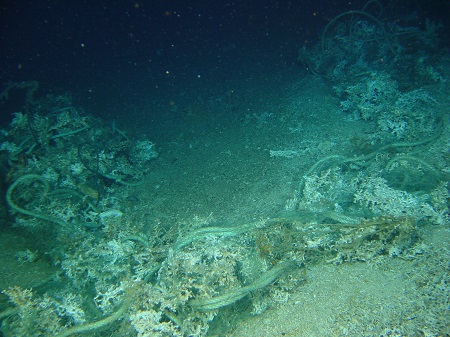
LITTERBASE currently comprises 1,426 scientific publications on the amount, distribution and composition of litter in the ocean and other watercourses. This information is continuously updated and visualised in global distribution maps. However, litter has been quantified in many different units by different workers, which hampers direct comparison. Therefore, users can select subsets of data with the same unit for direct comparison in addition to global maps with all litter quantities. Furthermore, the information on display can be filtered according to size category of the litter (macro: > 5 mm, micro: ≤ 5 mm, nano: ≤ 100 nm) and habitat considered (beach, sea surface, water column, seabed).
The global map shows that there is already a lot of information available on litter pollution from certain areas, for example, the Mediterranean Sea. By contrast, much less is known about litter pollution in the tropics, around Africa or the Polar Regions. The map also shows that litter quantities vary strongly within certain regions (e.g. in the Southwest Pacific and East Asia).

The composition of litter in different realms of the ocean is summarised in info graphics. Litter and microplastic were separated for these, because, unlike litter, microplastic comprises exclusively plastic. Most studies are about litter on the beach 619, followed by the sea surface 426, seafloor 373 and water column 121. Plastics accounted for the bulk of litter in most realms of the ocean (60 - 79 %). However, on the seafloor, metal and glass/ceramics also contributed significantly to the litter records. Small fragments of plastics and Styrofoam dominated microplastics at the sea surface and in the water column, whereas large amounts of resin pellets, dominate on the beach and seafloor. Resin pellets are the raw material, from which plastic products are made. They are often lost during transport or manufacturing.
All info graphs can be downloaded (Supported by Google Chrome & Mozilla Firefox) (source: LITTERBASE/AWI).
Keywords
Marine litter, marine debris, microplastic, global distribution, composition, GIS, WebGIS
Citation
Tekman MB, Gutow L, Macario A, Haas A, Walter A, Bergmann M: Alfred-Wegener-Institut Helmholtz-Zentrum für Polar- und Meeresforschung